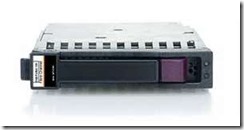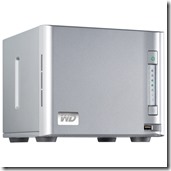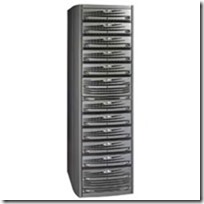Virtualization Storage–Definitions (20+ Days of Server Virtualization - Part 5 of 20)
As we move through the 20+Days of Server Virtualization Series, the next topic we’re covering is Virtualization Storage. As a starting point for these next few posts on this topic, we’ll start out with some definitions of virtualization storage topologies used in conjunction with Windows Server 2012 server virtualization to set the stage.
As server-based workloads have migrated to virtualized platforms over the past several years, the storage platforms available to these server workloads have moved as well. For those customers using Windows Server 2012 Hyper-V, there are a myriad of storage options available to both the host (Windows Server 2012 Hyper-V server) and the virtual machine (guest operating system running on Hyper-V such as Windows Server 2012, Windows Server 2008 R2, Linux, etc.) These storage solutions offer various price points and performance characteristics that range from the most inexpensive solutions for small business to very fast, highly redundant solutions commonly used in large enterprises.
Below is a collection of storage platforms that are commonly used with Windows Server 2012 Hyper-V virtualization workloads
Direct Attached Storage (DAS) – Direct Attached Storage or “DAS” as it has become commonly known refers to a collection of hard disk drives housed in a storage enclosure that is located physically inside the Windows Server 2012 machine. These disk driv es are typically connected via an embedded or PCI-based storage controller (SCSI, SATA, etc.) which communicate with the type of hard disk drives that are located in the disk enclosure. These drives are most often placed in a RAID (Redundant Array of Inexpensive Disks) to provide a fault tolerant storage volume for the host Windows Server 2012 server. Direct Attached Storage solutions are often the lowest cost storage option for virtualization storage since the internal RAID controllers common in these servers come at a much lower price point than the external storage controllers and subsequent storage networking components I’ll point out in some of the other storage solutions below. What’s unique about using Direct Attached Storage with Windows Server 2012 Hyper-V is that two servers with Direct Attached Storage can be configured to allow highly-available virtual machines using a feature called Shared Nothing Live Migration, so leveraging Direct Attached Storage doesn’t preclude customers needing highly available virtualization storage solutions.
es are typically connected via an embedded or PCI-based storage controller (SCSI, SATA, etc.) which communicate with the type of hard disk drives that are located in the disk enclosure. These drives are most often placed in a RAID (Redundant Array of Inexpensive Disks) to provide a fault tolerant storage volume for the host Windows Server 2012 server. Direct Attached Storage solutions are often the lowest cost storage option for virtualization storage since the internal RAID controllers common in these servers come at a much lower price point than the external storage controllers and subsequent storage networking components I’ll point out in some of the other storage solutions below. What’s unique about using Direct Attached Storage with Windows Server 2012 Hyper-V is that two servers with Direct Attached Storage can be configured to allow highly-available virtual machines using a feature called Shared Nothing Live Migration, so leveraging Direct Attached Storage doesn’t preclude customers needing highly available virtualization storage solutions.
Network Attached Storage (NAS) – Network Attached Storage or “NAS” generally refers to a wholly enclosed remote disk subsystem located typically over an Ethernet network that the Windows Server machine can mount as if it were local storage. Typically used for only file sharing, the Network Attached Storage is accessed over a network using a network protocol. The remote storage is presented to the Windows Server 2012 machine by the Network Attached Storage device and can be configured as a local storage volume. Network Attached Storage has only become supported with Windows Server 2012 as virtualization storage when utilizing the SMB 3.0 protocol to connect to the Network Attached Storage. More details on utilizing SMB 3.0 for virtualization storage will be outlined in the next post in the 20+ Days of Server Virtualization Series.
Storage Area Network (SAN) – A Storage Area Network or “SAN” can be defined as remote disk subsystem connected to the Windows Server 2012 host over a high speed network connection. Components of a Storage Area Network generally include one or more high speed net work controller cards (iSCSI, SAS and Fiber Channel being the most common), high speed network cabling (CAT5e, CAT 6 or fiber optic cables), network switches (high speed Ethernet or Fiber Channel) and a specialized disk subsystem. Components of the specialized Storage Area Network disk subsystem typically include multiple internal caching RAID controllers, multiple backplanes, a highly configurable management interface, and the ability to attach many disk enclosures to support hundreds of SATA, SCSI or Fiber Channel Disk drives. While a Storage Area Network is a very common virtualization storage platform due to its enterprise-class performance, massive scalability and flexibility to host many disparate disk topologies (ie. SATA, SAS, Fiber Channel) at the same time, they are also generally the costliest. This is due to the high cost of the storage controllers, the cost of the fiber optic cabling (if applicable), the cost of the very high speed dedicated network switches and the proprietary storage subsystems themselves. Windows Server 2012 has the ability to lower the cost of iSCSI Storage Area Network topologies by offering built-in iSCSI Software Target which can be used with Hyper-V. Windows Server has supported using Storage Area Networks for many generations and a major benefit in Windows Server 2012 is the increased support for very large file systems such as a the use of a 4-KB logical sector virtual disk that allows for increased performance when used by applications and workloads that are designed for 4-KB sectors. Also, when utilizing these 4-KB sector disks, Windows Server 2012 has support for virtual hard disk storage capacity of up to 64 TB on both the host and the guest virtual machines.
work controller cards (iSCSI, SAS and Fiber Channel being the most common), high speed network cabling (CAT5e, CAT 6 or fiber optic cables), network switches (high speed Ethernet or Fiber Channel) and a specialized disk subsystem. Components of the specialized Storage Area Network disk subsystem typically include multiple internal caching RAID controllers, multiple backplanes, a highly configurable management interface, and the ability to attach many disk enclosures to support hundreds of SATA, SCSI or Fiber Channel Disk drives. While a Storage Area Network is a very common virtualization storage platform due to its enterprise-class performance, massive scalability and flexibility to host many disparate disk topologies (ie. SATA, SAS, Fiber Channel) at the same time, they are also generally the costliest. This is due to the high cost of the storage controllers, the cost of the fiber optic cabling (if applicable), the cost of the very high speed dedicated network switches and the proprietary storage subsystems themselves. Windows Server 2012 has the ability to lower the cost of iSCSI Storage Area Network topologies by offering built-in iSCSI Software Target which can be used with Hyper-V. Windows Server has supported using Storage Area Networks for many generations and a major benefit in Windows Server 2012 is the increased support for very large file systems such as a the use of a 4-KB logical sector virtual disk that allows for increased performance when used by applications and workloads that are designed for 4-KB sectors. Also, when utilizing these 4-KB sector disks, Windows Server 2012 has support for virtual hard disk storage capacity of up to 64 TB on both the host and the guest virtual machines.
In addition to these virtualization storage options, another solution which isn’t quite a category unto itself is a JBOD or “Just a Bunch Of Disks which refers to a collection of hard disk drives located in a local or remote storage enclosure that is accessible to a host Windows Server 2012 server, and connected through a storage controller directly to the hard drives. Windows Server 2012 is able to interface directly with SAS connected JBODs that comply with Windows Certification requirements to provide failover clusters.
Enjoy!